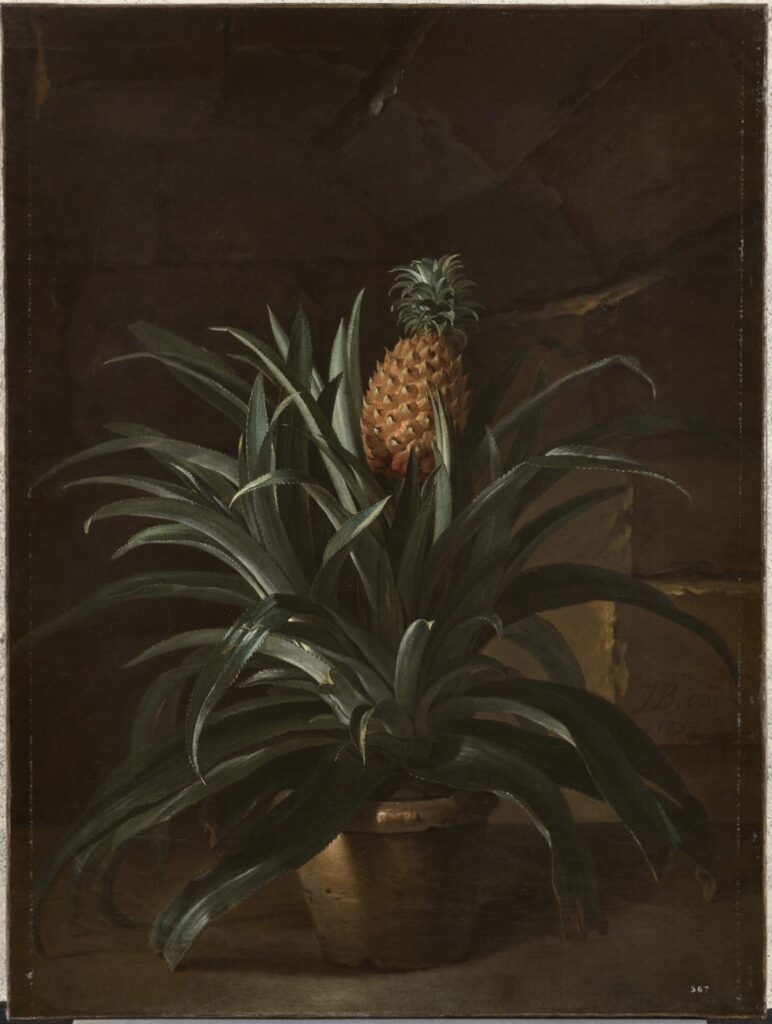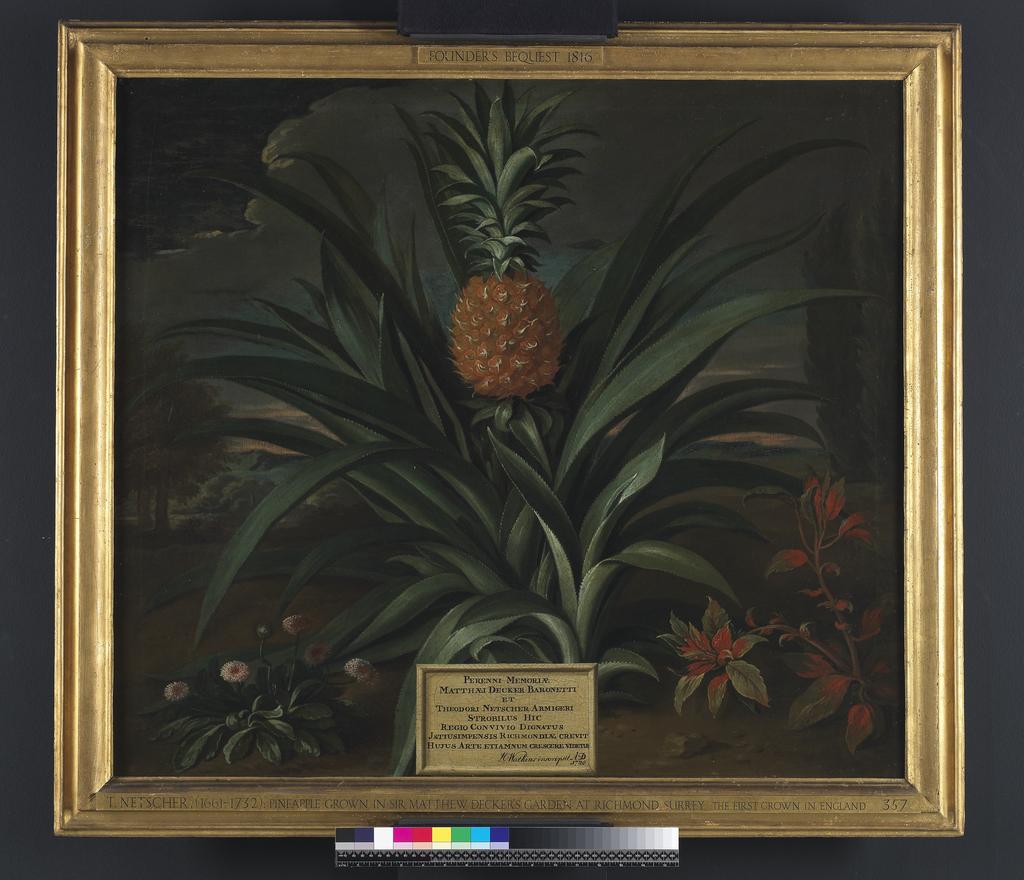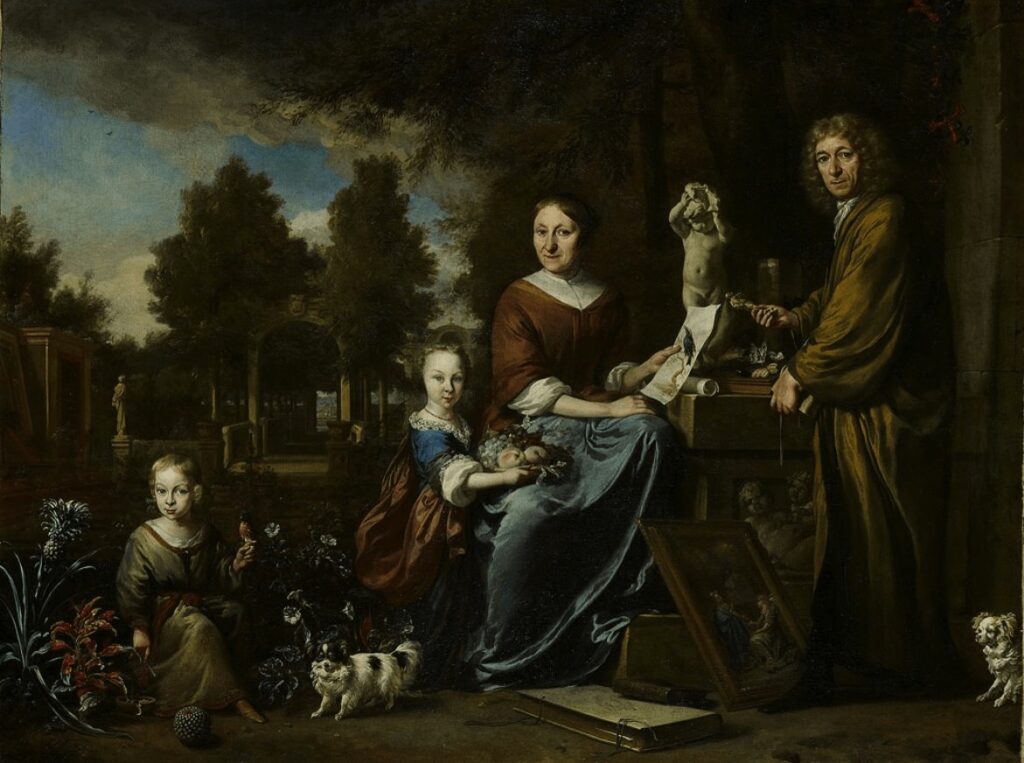
In 1733 Jean-Baptiste Oudry, 47, had been a painter to Louis XV for several years. He had a studio in the Tuileries and an apartment in the Louvre. He kept very busy being on call, painting whatever the king wanted painted. He painted the king’s hunt, both the action and his dogs and daily catch; he painted the exotic animals in the king’s menagerie. While cranking out paintings on demand for the king, he was also named chief designer for the king’s tapestry manufactory at Beauvais, and for the factory at Gobelins. And some time probably toward the end of the year, he painted a portrait of the first pineapple grown in Europe France*. [whoo boy updates below]
Louis XIV had reportedly tasted a pineapple in 1712, and they’d been brought to the courts of Portugal and Spain in the late 17th century. Louis le Normand, director of the Royal Kitchen Garden at Versailles, had spent two years cultivating pineapple plants in a hothouse. The (two) first pineapples were served to Louis XV on Christmas 1733.
The painting is remarkably moody, the lighting dramatic, the setting boring. All that matters is the divine light shining down on the king of fruits. The scholar dealers of Matthiesen Gallery’s observations on Oudry’s menagerie animals applies equally to his exotic fruit: “The raison dêtre of such pictures, as for so much of Oudry’s art in its bewildering variety, is this obsession with the notion of singularité, which is also the essence of Rococo.”
Aristocratic pineapple cultivation and a pineapple craze followed Louis XV’s success. Later in the 18th century Marie Antoinette hung Oudry’s pineapple painting in one of her private chambers, the cabinet doré.
[next morning update]: How was I to know that there was more to Europe than France, and that there were once rivalries among different monarchs in different European countries, including over the growing of pineapples, a symbol of both international colonial/imperialist trade networks and technological prowess? Anyway Francesca Bauman did a whole episode of Gastropod about her book, Pineapple: The King of Fruits in 2023. tl;dr is the Dutch first produced pineapples in Northern Europe in 1685, and Dutch gardeners and their hothouse and tanners bark-fueled peat/composting technique produced a pineapple in England [!] in 1720. Anglo-Dutch trader Sir Matthew Decker’s Dutch gardener Henry Telende published the specs of his tanners bark process in 1721. Decker commissioned a portrait of his pineapple from Theodorus Netscher, a painter in The Hague.

Decker, born in Amsterdam, was a director of the South Sea Company—which later imploded in the South Sea Bubble financial crisis—and the East India Company, and an MP. The pineapple portrait, along with Netscher’s portrait of Decker, were part of the founding collection of the Fitzwilliam Museum at Cambridge, established by Decker’s grandson.
So Oudry’s wasn’t even the first pineapple grown in Europe *painted* in Europe.
[a few minutes after that update]: Bluesky’s got it, folks, because as soon as post my first pineapple in Europe nonsense, someone who actually knows something posts a link to a doctoral candidate’s entire blog post about the imperialist, colonialist, and extractionist history of European pineapple cultivation. So shoutout to Stephanie Porras for the heads up, shoutout to Cynthia Kok for her Feb 2020 JHI Blog post about Agneta Block, and shoutout to Agneta Block for commissioning Jan Weenix to paint your family’s and your cultivated pineapple’s portrait in 1693-94. And for growing a pineapple.

It’s interesting to note the difference between the symbolic insertion of a pineapple in Weenix’s clearly composed portrait of Block, and the more purportedly documentary styles of both Netscher and Oudry. For almost two centuries after Europeans learned of it, pineapples existed as images, then experiences, then imports. Their brand was built on taste and aesthetics, sure, but also on rarity and their direct link to sources and networks of imperialist and economic power. After a couple of centuries, they just became symbols of extreme wealth. And after another couple of centuries, I just ate some of a $3 pineapple for breakfast.
Jean-Baptiste Oudry, Ananas dans un pot, 1733 [chateauversailles.fr]
Theodorus Netscher, Pineapple grown in Sir Matthew Decker’s garden at Richmond, Surrey, 1720 [fitzmuseum]
Agneta Block’s Pineapple: Colonial Botany and the Europeanization of Knowledge [jhiblog]
